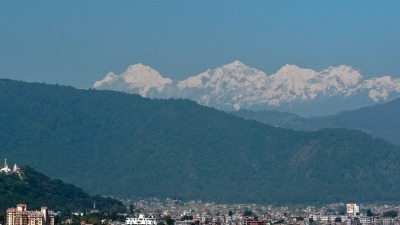Nepal is undergoing two momentous transformations – from a rural to an urbanizing economy and from a unitary to a federal state. Urban Growth and Spatial Transition in Nepal: An Initial Assessment provides insights into the first of these two transitions – Nepal’s journey towards becoming a predominantly urban economy.
A Changing Country
A largely rural country, with only 17 percent of the population living in urban areas, Nepal is urbanizing rapidly. With a population of 2.5 million people, the Kathmandu Valley is growing at 4 percent per year, one of the fastest-growing metropolitan areas in South Asia, and the first region in Nepal to face the unprecedented challenges of rapid urbanization and modernization at a metropolitan scale. Outside the valley, Pokhara, the largest medium-size city, is also expanding rapidly, with an annual population growth rate of 5 percent. Clusters of non-farm economic activities, comprising a core urban center surrounded by a hinterland of small towns and rural areas, have emerged close to the border with India. And towns are growing rapidly along the main highways, with population increasing by 5-7 percent every year in the fastest-growing settlements.
Despite the important contribution of urban areas to GDP and poverty alleviation, rapid urbanization has been accompanied by lower economic growth in Nepal than in other South Asian countries. The lack of economic stimuli combined with the insecure political situation has resulted in a massive exodus of the Nepalese productive workforce from the country, and Nepal’s growth is becoming increasingly reliant on highly volatile external remittance flows, rather than internal competitiveness.
“At this critical juncture of Nepal’s economic development, managing rapid urbanization is essential to improving the competitiveness of the Nepalese economy, creating jobs and accelerating economic growth. This will help reduce poverty even further as well as contribute to sustainable and balanced development”, says Tahseen Sayed, World Bank Country Manager for Nepal.
From Rural to Urban – The Challenges
Managing rapid urbanization poses challenges that require urgent policy attention. One critical challenge is haphazard and uncontrolled growth of built-up areas. Because they are classified as rural areas in spite of their urban characteristics, several market and border towns are growing “under the radar” without government planning and control. Unplanned urban development in the Kathmandu Valley has led to rapid and uncontrolled sprawl; irregular, substandard, and inaccessible housing development; loss of open space, and decreased livability. It has also increased vulnerability to disasters, making Kathmandu one of the most earthquake-vulnerable cities in the world. Limited connectivity and access to markets, exacerbated by the country's difficult topography, and intermittent electricity supply are major impediments to the expansion of nonfarm economic activities. Public capital expenditure for municipal infrastructure is inadequate to meet the growing needs of urban areas, and is biased against Kathmandu and the largest cities, where infrastructure needs are the greatest.

